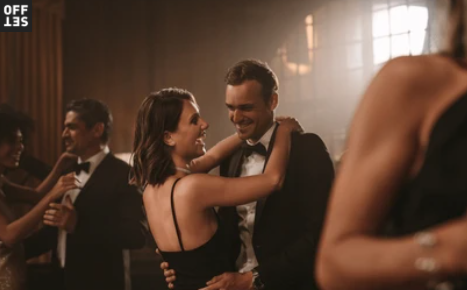The portrayal of romantic women in literature and media has undergone significant evolution over the centuries, reflecting changing societal norms, cultural shifts, and evolving perceptions of gender roles. From classical literature to modern media, the depiction of romantic women has been shaped by prevailing ideologies, offering a fascinating lens through which to examine societal attitudes towards love, relationships, and femininity.
Classical Literature:
In classical literature, particularly in works from the Renaissance and earlier periods, women were often cast in idealized and often passive roles within romantic narratives. Female characters were frequently depicted as objects of desire, embodying virtues such as purity, beauty, and innocence. Shakespearean plays like “Romeo and Juliet” or Austen’s novels like “Pride and Prejudice” often showcased women navigating the complexities of love and societal expectations, yet their agency and independence were limited.
Victorian Era:
During the Victorian era, literature reflected the prevailing societal values of modesty and virtue. Romantic women in novels like those written by the Brontë sisters or Dickens were often portrayed as morally upright, sacrificing their own desires for the greater good. The concept of the “angel in the house” prevailed, emphasizing women’s selfless devotion to family and home, often at the expense of personal fulfillment.
Modern Literature:
The 20th century brought about significant shifts in the portrayal of romantic women. With the rise of feminist movements, literature began to feature more complex and multidimensional female characters. Authors like Virginia Woolf and Daphne du Maurier explored the inner lives and desires of women, challenging traditional gender roles and presenting romantic relationships as sites of personal growth and empowerment.
Film and Television:
In the realm of visual media, the portrayal of romantic women has evolved in tandem with societal changes. Early Hollywood often presented women as damsels in distress, awaiting rescue by a heroic male figure. However, as the 20th century progressed, so did the diversity of romantic female characters on screen.
The 1980s and 1990s witnessed the emergence of “romantic comedies” where women were not merely passive objects of affection but active participants in their romantic destinies. Films like “When Harry Met Sally” and “Pretty Woman” featured strong, independent women who played key roles in shaping their own love stories.
Contemporary Media:
In the 21st century, there has been a noticeable push for more diverse and realistic representations of romantic women. Television shows like “Sex and the City” and “Fleabag” depict women navigating the complexities of modern relationships, embracing their sexuality, and challenging societal expectations. Additionally, literature and media increasingly explore LGBTQ+ relationships, providing a broader spectrum of romantic experiences.
Challenges and Stereotypes:
Despite the progress, challenges persist in the portrayal of romantic women. Stereotypes, such as the manic pixie dream girl or the overly romanticized damsel, continue to surface. These stereotypes can limit the diversity of women’s experiences in love and perpetuate unrealistic expectations.
Empowerment and Agency:
In recent years, there has been a conscious effort to portray romantic women as individuals with agency, aspirations, and flaws. Female characters are increasingly written as architects of their own destinies, making choices that extend beyond traditional romantic narratives.
In conclusion, the portrayal of romantic women in literature and media is a dynamic reflection of societal attitudes and evolving cultural values. From passive objects of desire to empowered protagonists, the representation of romantic women has shifted alongside broader changes in gender roles, providing a rich tapestry that reflects the diverse experiences of women in love throughout history and into the present day.

